Sonoff Basic ZBR3, the famous relay version for Zigbee. Interior, schematic
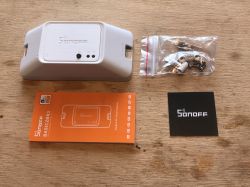
Hello my dear friends. I will present here a short test and teardown of the famous Sonoff smart relay in the Zigbee version, the Sonoff BasicZbr3. I will check if it can be paired with Home Assistant via Zigbee2MQTT on CC2531, take a look at its interior and try to sketch its partial schematic.
Purchase Sonoff BasicZbr3 Sonoff BASIC ZBR3 is available in many online stores. At one time I bought it for 40 PLN + 14 PLN with shipping from China, although it is also available in our country. I found it under: SONOFF BASIC ZBR3 ZB DIY Smart Switch Controlled Via SmartThing APP Works With SmartThings Hub Alexa .
Offer screenshot:
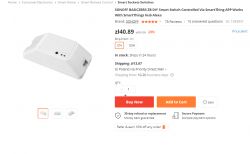
Note: This product also comes in a WiFi version (Sonoff Basic R3), please be careful what you order!
Vendor description, compatibility:
Quote:SONOFF BASICZBR3 is the first SONOFF ZB DIY Smart Switch that connects SmartThings hub to control all the connected appliances via SmartThing APP on iOS/Android phones to access rooms, scenes, members or automations mode to build a smart house. Seamlessly works with Amazon Alexa platforms including ZE39KL Plus, Studio, DW84JL 2nd Gen Show & L9D29R 2nd Gen Plus, directly pair with ZB smart switch via your voice, just say: “Alexa, find device” and see.Plus, more triggering conditions like schedule, device, location and alarm can be used to make appliances connected with ZB smart switch activated or inactivated. Follow SONOFF ZB smart switch to start your a new smart home journey.
Feature:
- Compatible with Amazon Alexa.
- Works with SmartThings hub .
- Set sunrise and sunset routine to turn on or off lights.
- Hands-free voice control.
- Schedule devices on or off.
- Turn on or off lights based on your location.
- Customize devices to trigger devices.
Specification (these type products also work on 120V):
Quote:
Max Current: 10A;
Max.input: AC 100-240V 50/60Hz 10A;
Max.Output: AC 100-240V 50/60Hz 10A;
Gang: 1;
ZB: IEEE 802.15.4 2.4GHz;
Enclosure Material: PC V0;
Product Dimensions: 91*43*25(mm);
Promotional graphics:
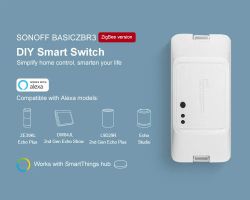
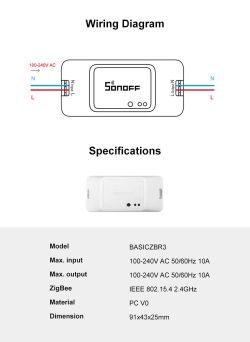
There are also instructions available for it on the Internet:
. Kit contents, launch From the seller we receive an orange box:
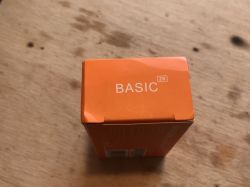
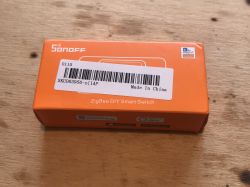
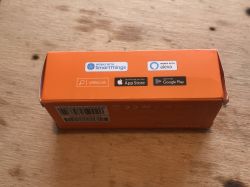 .
. 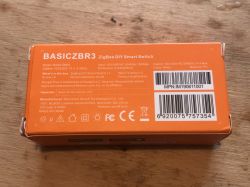
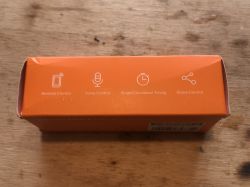
The set is a bit richer than usual. In fact, this is the first time I get a kit with a 'smart' relay where the manufacturer has thought of a solid cable attachment, so that it is a little better protected from pulling out. These white items in the bag with screws are for this purpose:

Instruction manual (but I will not pair according to it with the manufacturer's hub, I will use my own Home Assistant server):
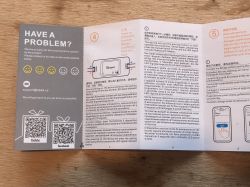
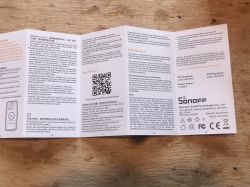
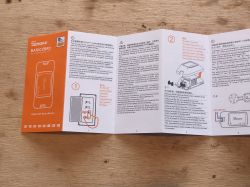
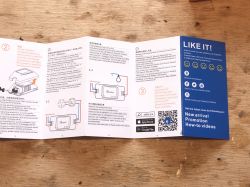 The product has two LEDs, one indicating pairing status the other operating status:
The product has two LEDs, one indicating pairing status the other operating status:
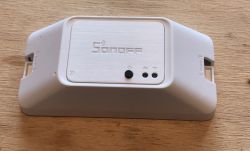
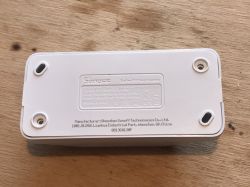
The housing is solid and double-layered, in addition, the screw terminals are far inside the housing, this I can already call a big plus:
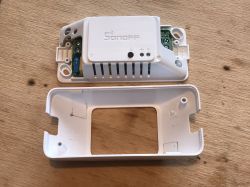
The red LED indicates On/Off status:
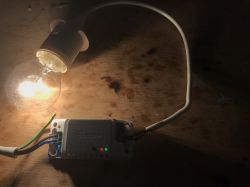
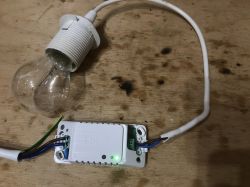
A short press of the button toggles the relay, a long press turns on pairing with the hub.
Pairing with Home Assistant
To pair this relay with Home Assistant we need to have HA server and Zigbee2MQTT plugin prepared according to my description:
https://www.elektroda.pl/rtvforum/topic3777098.html
For this you also need a Zigbee USB adapter:
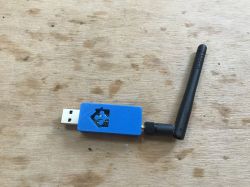
When we have everything we need, we press the longer button on the case:
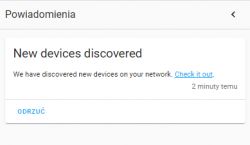
The device appeared on the Zigbee2MQTT list:

It is recognized as "Zigbee smart switch (BASICZBR3)", manufacturer SONOFF.
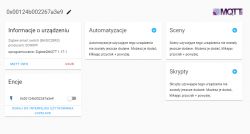
And it can already be controlled by Home Assistant.
Inside of the relay.
I had already removed the protective cover to be able to screw the wires to the terminals, now it is still left to remove the frame:
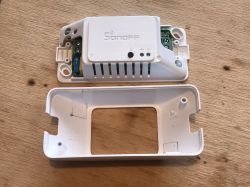
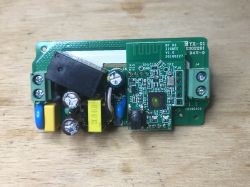
Zigbee module (CC2530):
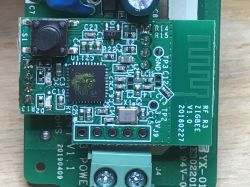
CC2530, System On Chip by Texas Instruments:
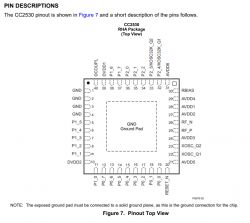 .
.Around it we see a 32MHz clock generator (or resonator):
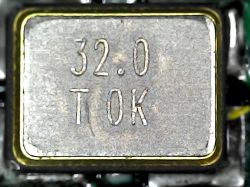
The antenna is as usual as a path on the PCB.
On the 230V input side is a varistor (surge protection) STE10D471K, 10D471K:

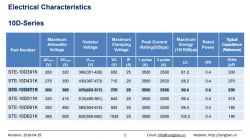
Below is an explanation of the varistor designations:
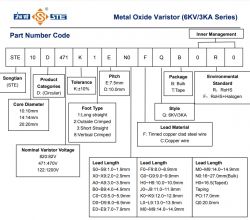
In the black cap is the fuse, you can also see the X2 capacitor (so-called. X-Class capacitor), two electrolytic capacitors and a choke between them (the rectifying bridge is on the bottom of the PCB):
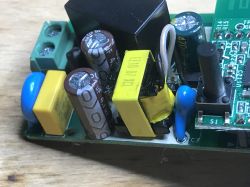
The X2 capacitor after soldering:
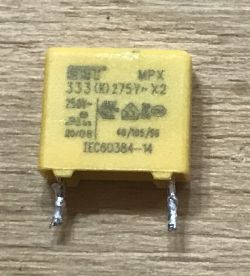
It has an anti-interference role.
Transmitter 10A:
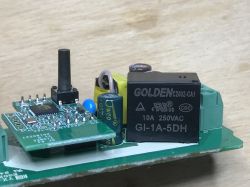
GI-1A-5DH, explanation of designations (from the GJ series but here it is similar):
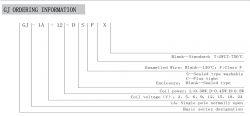
Capacitor Y, CD221K, that is connecting the primary side to the secondary side of the inverter:
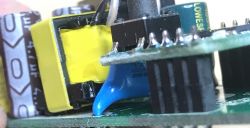
Bottom, flyback controller:
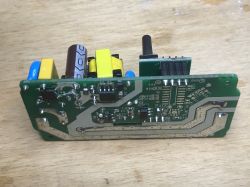
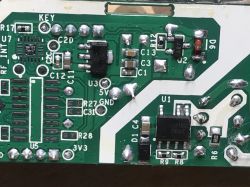
On the mains side you can see the rectifier bridge, the CSC7102C flyback converter controller, on the low voltage side the LDO regulator 3.3V and a transistor and diode from the relay. Transistor with code J3Y, perhaps S8050, they are popular with them.
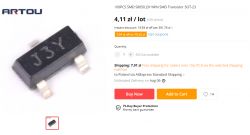
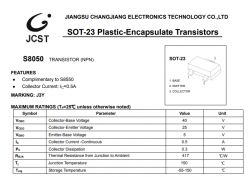 This LDO regulator, however, is not AMS1117 3.3V, here it is less typical:
This LDO regulator, however, is not AMS1117 3.3V, here it is less typical: 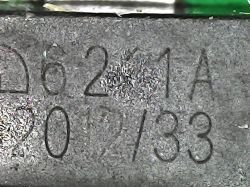
6211A 3.3, I think ME6211A33P in SOT-89 housing.
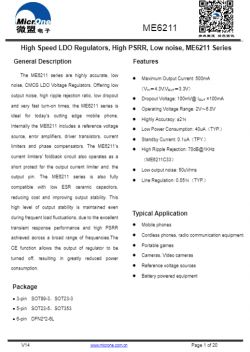
Explanation of designation:
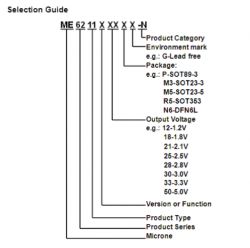
Analysis of the and schematic of the power section
The power supply is realized on CSC7102C 5V 0.5A 3W SOP-7 inverter controller.
I couldn't find its datasheet, but a bit of information is there:
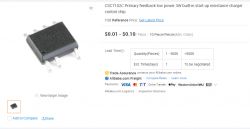
Described as CSC7102C Primary feedback low power 3W built-in start-up resistance charger control chip.
"Primary feedback" means that the feedback is taken from the primary side (from the auxiliary winding, on the FB pin, otherwise FeedBack or Vsense, as opposed to feedback through an optocoupler such as the PC817 from the secondary side), built-in start-up resistance means that the characteristic resistors that charge the capacitor providing power for the inverter controller are built into the chip (they are not on the PCB). The power supply for the inverter controller is initially taken through these resistors, and then this capacitor is already charged from the auxiliary winding through a rectifying diode.
On the web there are catalog notes for similar components, e.g. IW1810, its leads are consistent with CSC7102C:
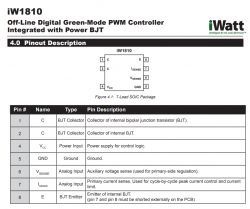
His example application requires slightly more components (absent on the board from the topic I deleted):
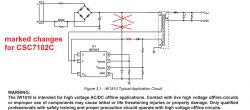
(these crossed-out resistors are just the "start-up resistance")
I have described everything in the graphic below:
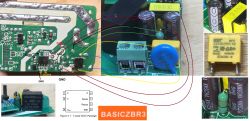
And on the sketch of the power supply schematic (on the secondary side, the connections omitted, they are not so important and interesting, it is known that the zigbee module controls the relay through a transistor, etc.):

Of course, this flyback is just a few components crossed. Two 7.2k resistors as a voltage divider on the Vsense pin, a 3.3 ohm resistor as a shunt on Isense, diode D1 and capacitor C4 to provide power for the CSC7102C from the auxiliary winding. On the secondary side, a schottky diode (used because of the small voltage drop) and an LDO regulator.
The Zigbee module in the schematic was omitted by me.
Summary Sonoff seems to be a bit more popular than other 'smart' brands, and this product shows that to some extent this is deserved.
Double casing, additional hooks so that the user could more solidly fix the cable and protect it from pulling out are seemingly small things, but somehow in other manufacturers I have not seen them.
By comparison with such Blitzwolf, in the BW-SS1 a stubborn child could push his finger into the screw terminal and be shocked, while here everything is covered.
The product from the topic communicates via Zigbee, which means that it must require a hub (from the manufacturer or 'own' e.g. on Home Assistant), the WiFi network at home alone is not enough, but in my opinion this is not a big problem. Although it's a fact that if you want to control only one device in the whole house and keep costs to a minimum, you are unlikely to choose Zigbee. Also Zigbee's strong point is energy efficiency, but for me this matters more for battery-powered products (because it allows you to change the battery less often).
Home Assistant supports this relay without a problem (it sees it as BASICZBR3 via Zigbee2MQTT 1.17.1).
When it comes to price, at the time of writing this I see that the Zigbee version is about £10-20 more expensive.
In the middle of the product I was surprised only by the lack of any gasifier in the small flyback power supply realized on the CSC7102C (C7102C), I hope that this economy of the manufacturer will not take revenge (although on the web under the keyword "C7102C sonoff" I see that someone has already experienced problems with such an inverter).
I am attaching BASICZBR3 related materials (notes of similar flyback controllers and more): .



Comments